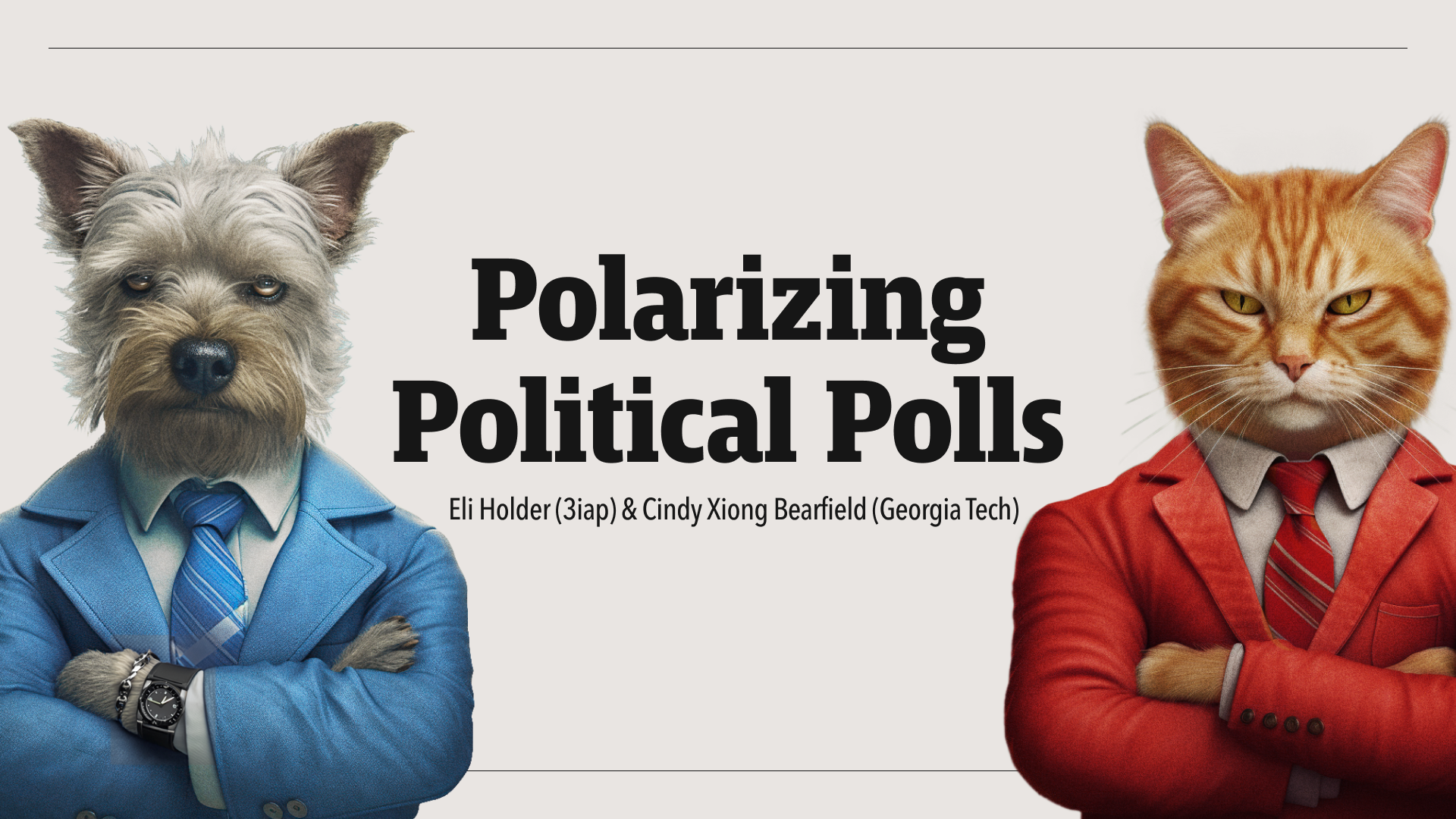Polarizing Political Polls: Visualization Design Choices Can Shape Public Opinion and Increase Political Polarization
Eli Holder, Cindy Xiong Bearfield
DOI: 10.1109/TVCG.2023.3326512
Room: 109
2023-10-26T22:48:00ZGMT-0600Change your timezone on the schedule page
2023-10-26T22:48:00Z

Fast forward
Full Video
Keywords
Political Polarization, Public Opinion, Social Categorization, Survey Data, Social Influence, Attitude Change
Abstract
While we typically focus on data visualization as a tool for facilitating cognitive tasks (e.g.\ learning facts, making decisions), we know relatively little about their second-order impacts on our opinions, attitudes, and values. For example, could design or framing choices interact with viewers' social cognitive biases in ways that promote political polarization? When reporting on U.S. attitudes toward public policies, it is popular to highlight the gap between Democrats and Republicans (e.g.\ with blue vs red connected dot plots). But these charts may encourage social-normative conformity, influencing viewers' attitudes to match the divided opinions shown in the visualization. We conducted three experiments examining visualization framing in the context of social conformity and polarization. Crowdworkers viewed charts showing simulated polling results for public policy proposals. We varied framing (aggregating data as non-partisan “All US Adults,” or partisan “Democrat” / “Republican”) and the visualized groups' support levels. Participants then reported their own support for each policy. We found that participants' attitudes biased significantly toward the group attitudes shown in the stimuli and this can increase inter-party attitude divergence.These results demonstrate that data visualizations can induce social conformity and accelerate political polarization. Choosing to visualize partisan divisions can divide us further.